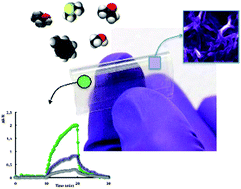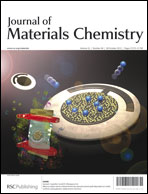Sensing skins made of reduced graphene oxide (RGO) based quantum resistive vapour sensors (vQRS) have been developed by combining two original processes, i.e., the synthesis of phase transferable graphene sheets using ionic liquid polymers (PIL) and the structuring of 3D conducting architectures by the spray layer by layer (sLbL) technique. Many advantages can be derived from this new technology, such as versatility of fabrication (sprayability, no need for a clean room), flexibility, potential transparency and low cost, making vQRS skins very attractive to develop the next generation e-noses with quick response time (less than 3 s), room temperature operability, high sensitivity and adjustable selectivity. This can open the door to a wide range of applications, in particular smart packaging, making the monitoring of the quality/safety of food possible by following VOC biomarkers emitted during its alteration. RGO based QRS are also expected to be biocompatible, exempt from cytotoxicity and the risks of migration of RGO sheets in food must be very limited, thanks to their very large surface/thickness ratio and to their embedment into a polymer matrix. Comparing pristine RGO, RGO–PIL and RGO–PIL/PEDOT QRS undoubtedly establishes the superiority of the latter in terms of sensitivity and selectivity for the detection of volatile organic solvents (VOCs) released from food during its degradation. The reason for this can be found in the unique architecture of the transducer, optimizing functionalization in solution by the combined action of PIL and PEDOT and structuring in the solid state by the step by step assembly in 3D by sLbL.

You have access to this article
 Please wait while we load your content...
Something went wrong. Try again?
Please wait while we load your content...
Something went wrong. Try again?


 Please wait while we load your content...
Please wait while we load your content...